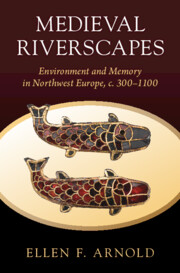Book contents
- Medieval Riverscapes
- Studies in Environment and History
- Medieval Riverscapes
- Copyright page
- Dedication
- Contents
- Figures
- Maps
- Tables
- Acknowledgements
- Preface
- Introduction
- 200–450: Late Antique Gaul
- 1 Poetries of Place
- 450–750: The Merovingians
- 2 Rivers of Risk
- 3 River Resources
- 750–950: The Carolingians
- 4 Rivers and Memory
- 950–1050: The Year 1000 Question
- 5 Ruptured Rivers
- 6 Meanderings
- 1050–1250: A New World?
- 7 The Same River Twice
- Bibliography
- Index
- Studies in Environment and History
Introduction
Medieval Waters
Published online by Cambridge University Press: 15 March 2024
- Medieval Riverscapes
- Studies in Environment and History
- Medieval Riverscapes
- Copyright page
- Dedication
- Contents
- Figures
- Maps
- Tables
- Acknowledgements
- Preface
- Introduction
- 200–450: Late Antique Gaul
- 1 Poetries of Place
- 450–750: The Merovingians
- 2 Rivers of Risk
- 3 River Resources
- 750–950: The Carolingians
- 4 Rivers and Memory
- 950–1050: The Year 1000 Question
- 5 Ruptured Rivers
- 6 Meanderings
- 1050–1250: A New World?
- 7 The Same River Twice
- Bibliography
- Index
- Studies in Environment and History
Summary
This book explores the cultural meanings of rivers over a broad span of time (c. 300–1100). The regional focus is on Northwestern Continental Europe (France, Germany, and Benelux), on the territories that were the core of Roman Gaul and of Merovingian and Carolingian Francia. During these centuries, several fundamental redefinitions of culture, community, and economy took place: the transformation of the Roman Empire and the rise of the earliest Germanic kingdoms; the centralizing push of the Carolingian imperial government, especially under the aegis of Charlemagne; invasion and retrenchment during the Viking Age; and the emergence of new cultural, religious, and political communities around the year 1000, with a corresponding intensification of river use.
Information
- Type
- Chapter
- Information
- Medieval RiverscapesEnvironment and Memory in Northwest Europe, c. 300–1100, pp. 1 - 14Publisher: Cambridge University PressPrint publication year: 2024
